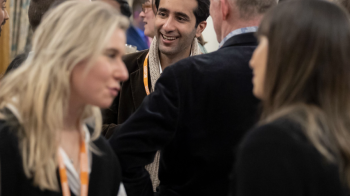Advertisers, ignore geriatric gamers and it's game over
Posted on Monday 22 November 2021 | James Chandler - CMO, IAB UK
Our CMO James Chandler draws on the findings from Real Living to explore how gaming audiences are evolving. This piece was first published by Campaign in June 2021
‘Are YOU a geriatric millennial?’ I can’t be the only one who’s done one of these quizzes in the past few weeks. And yep, before you ask, I am one - a self-confessed, Oasis-listening child of the Thatcher generation. A sub-gen of the Millennial cohort who grew up with Mario Kart and Nintendo 64, in the days before Fortnite, Candy Crush and Animal Crossing. Back when gaming was popularly seen as a pastime for young guys, and only really if you didn’t have many mates.
Oh how times change. The vast range of games on the market now are as diverse as the players themselves: puzzle games have followings to rival action games, and the technology on which they are being played in 2021 is more likely to be a smartphone than a PC or console. As a result, gaming is not only attracting Gen Zers but OAGs - old age gamers - a cohort of players that is both highly active and highly valuable to advertisers.
To mark IAB UK’s Gaming Week, we conducted a study of 1,000 UK adults to better understand who’s gaming, why they play and what they think about advertising. To start with, gaming is definitely no longer niche. More than a third (38%) of the UK population plays games on a smartphone every single day, while a quarter play on a console or computer daily.
When it comes to age, 54% of 35-44 year olds are gaming via smartphones every day - outstripping younger age groups. In fact, 24% of those aged 65 and over are playing on a console/PC or smartphone every day, smashing the gamer stereotype and proving that gaming has developed exponentially as a hobby and passion across the generations.
What’s more, while it’s well documented that lockdown has accelerated a surge in gaming, we discovered that the people who increased the frequency of their gaming the most fall mostly into one - or more - of three categories: people aged 35-54, women, and those who consider themselves less tech savvy. So what does this mean for advertisers looking to win in the in-game space?
Rather than turning to gaming to reach ‘gamers’ - a term still heavy with decades-old stereotypes - brands need to be thinking in terms of audiences instead. To the uninitiated, a middle-aged woman who isn’t confident using technology would be low on the list of the typical ‘gamer’, but many are and it’s only by broadening our definition of what a gamer is that advertisers can authentically speak to this audience.
We are currently seeing a renewed - in my view, irreversible - respect for the power of gaming as an advertising avenue, as demonstrated in the creation of dedicated divisions within agency groups and networks. Dentsu’s DGame, Publicis Play, Havas Entertainment and DDB’s For the Win (FTW) have all pinned their colours to the mast in recognition of this major opportunity for brands.
The good news for advertisers is that this highly engaged, dedicated audience fully understands the trade-off that exists between free content and advertising. In contrast to historical statistics that suggest 60% of gamers utilise ad blockers (Orvesto 2020), our study shows 63% of gamers accept the value exchange between digital advertising and free content.
This equates to more than three in five gamers who accept that advertising is par for the course for access to free online content; the most acceptable in-game advertising is for gaming accessories and products, particularly for those that play games on PCs and consoles.
For those in the know, gaming has long been one of the best kept secrets in advertising. But now, as it solidifies its entry into the mainstream, the industry’s understanding of the sector must catch up with the rapid pace of change. Brands are only going to get the most out of the untold opportunities to speak to a diverse, engaged, open-minded audience, if they update their understanding of what constitutes a gamer.
Yes, it’s less clear-cut and it challenges our well-established understanding of the tech-savvy teen hooked up to an Xbox, but that stereotype is no longer fit for purpose. When it comes to gaming, it’s time to advance to the next level and embrace the geriatric gamer.
Related content
The IAB Tech Lab projects publishers should know about
Learn moreAll roads lead to Manchester
Learn moreRetail, tech & finance lead agencies’ digital spend in 2024
Learn moreSpotlighting digital advertising’s power at Parliament
Learn more
Fast forward to 2030 with Futurescape
An in-depth exploration of the attitudes, innovations and media shifts that will shape the years ahead and redefine how we advertise by the turn of the decade



